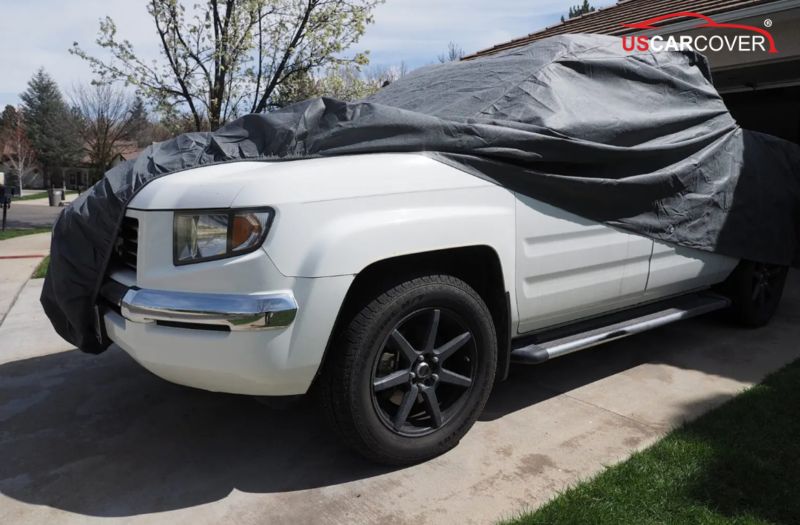
Ford car cover is not just a tarp to block sun and rain. For Ford owners in the United States, where weather swings fast and parking habits range from the driveway, to office lots, to the coast or snow country, a car cover is a proactive habit that protects both exterior and interior. The biggest pain points many drivers admit come down to three things: a car cover that feels too bulky so it is hard to use daily, a vehicle that deteriorates quickly when left in prolonged sun or days of rain, and a heat blast when opening the door because the cabin has stored up heat. This article follows the title closely and explains why a compact and durable Ford car cover that resists rain, blocks strong UV, and helps cool the cabin is a small but smart investment that reduces paint and interior care costs over the long haul.
To support search, the article naturally includes phrases such as: Ford car cover, Ford car tarp, UV resistant car cover, rain resistant car cover, breathable car cover, cabin cooling car cover, scratch resistant car cover, custom fit Ford car cover, outdoor car cover Ford, indoor car cover Ford, Ford full cover, Ford half cover, protect Ford paint, car cover for F-150, car cover for Mustang, car cover for Bronco, car cover for Explorer. The goal is not to stuff keywords but to reflect what users actually look for when considering a daily driver Ford car cover.
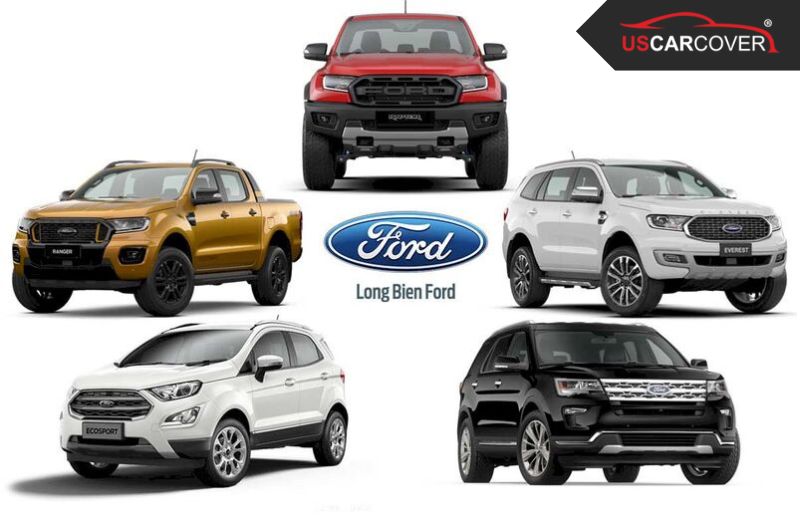
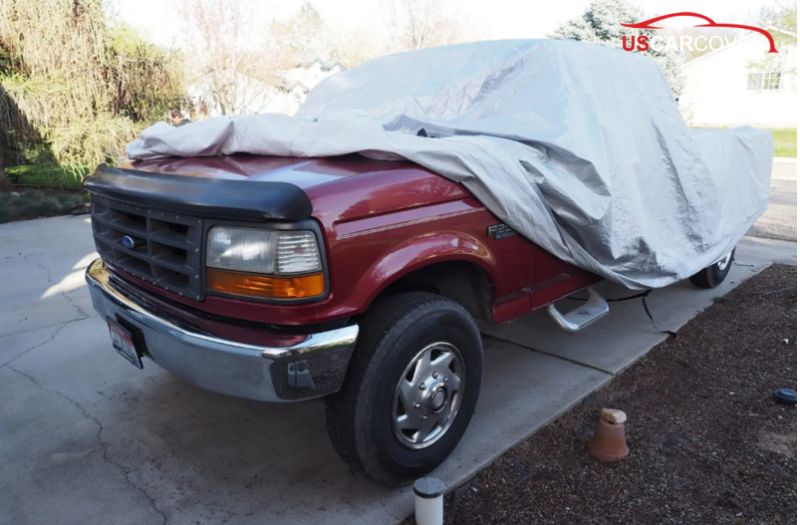
Related Articles: Fisker car cover: Soft liner, protecting the solar-integrated glass roof on Fisker
Real-world use of Ford in the U.S. and why a cover must be compact yet durable
A hallmark of Ford is the broad lineup: pickups such as F-150, Ranger, Maverick, SUVs such as Bronco, Explorer, Expedition, and coupes like Mustang, plus many hybrid and EV variants. Body sizes and heights vary, many models have roof racks, pronounced arches, off-road tires, or removable hard tops. In other words, Ford shows up in countless situations: parked in an Arizona front yard under Sun Belt heat, overnight near the Florida coast with salt mist, in a Texas office lot, or in Snow Belt areas where road salt is a daily reality. Each context erodes exterior quality if you leave things to chance.
On the flip side, what makes many people reluctant to use a cover is the bulky feel: heavy fabric, hard to fold, time-consuming to install and remove, flutters in the wind, and once it gets dirty you hesitate to wash it. The result is a cover that sits unused. The issue is not that you are lazy, it is that the product design does not match real habits. The solution is a Ford car cover that is light enough, folds compactly, ships with a breathable storage bag, handles simply, and most importantly is custom fit to the body so it does not puff in the wind. When using the cover feels like grab and go, the protection habit becomes sustainable.
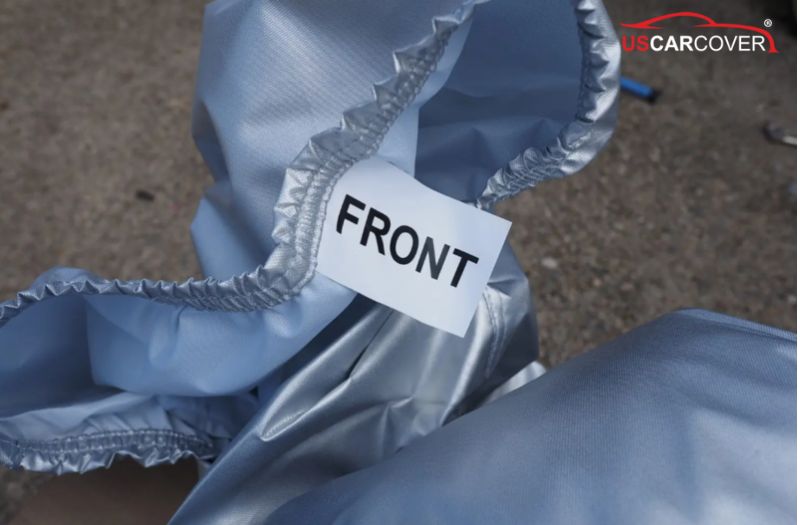
Durability is not only thick fabric. Durability is a system: breathable material so moisture does not get trapped, an ultra soft liner that is safe for paint and glass, recessed seams so there is no hard ridge, soft hems and underbody straps that stabilize airflow, plus a clean, dry, gentle, stable routine for installing and removing. When these elements work together, a custom fit Ford car cover stays durable in both longevity and protective effect.
Related Articles: Fiat car cover: Should you choose Full cover or half cover for Fiat
The pain of a bulky car cover and how to turn it into a compact experience
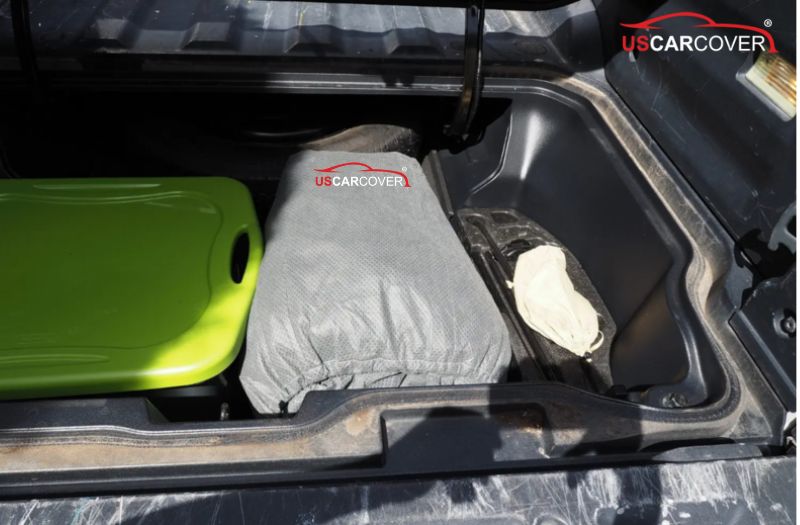
Many owners say they resist covering because two minutes on and two minutes off sounds short but somehow feels long during a busy day. The bulky sensation comes from three causes: heavy fabric, oversized dimensions that are not truly fitted, and a lack of reference points so each install becomes a struggle. When a generic cover is too loose, wind sneaks in and creates hollow pockets that make the fabric flap. That leads to sideways pulling to “fix” the position, which unintentionally increases friction on paint. If the cover is thick but not breathable, even a brief shower turns the space between liner and paint into a warm, damp zone that eventually smells and leaves mineral rings. That makes you even less likely to use it.
The fix begins with compact design and smart reference points. A clearly defined nose panel to place first, mirror pockets that lock the cover in position immediately, a proper drop at the tail so there is no stretch, elastic hems that hug the lower edges, and underbody straps for outdoor stability. From there, the motion sequence shrinks to four smooth steps: set the nose, align mirrors, let the fabric fall evenly, then secure. When the cover folds compactly into a breathable bag and you can carry it like a canvas tote, you no longer have a reason to skip the daily protection habit.
Related Articles: Ferrari Car Cover: Custom-fit, scratch-resistant, breathable, safe for paint
Strong UV: the real damage mechanism and why UV protection is mandatory
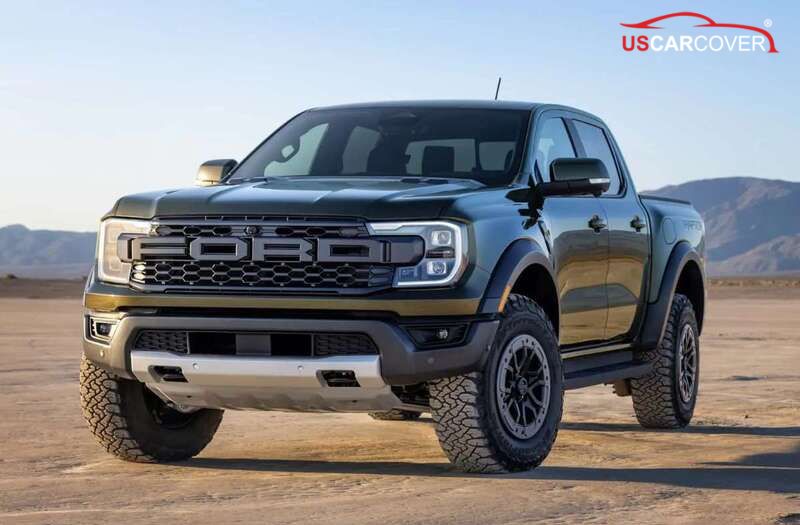
UV radiation quietly robs clear coat depth, fades exterior plastics, ages rubber seals, and over years can crack or bleach interior surfaces. On Ford bodies, zones that face direct sun such as the hood, roof, arch lips, bumper claddings, and matte black plastics show it first. Cabin heat dries leather, vinyl, and plastics, and some adhesives lose stability. If you often park in noon sun for hours, the cumulative impact is far higher than scattering exposure throughout the day.
A true UV resistant car cover is not defined by “thickness,” it is defined by solar reflectance that blocks a large portion of energy before it reaches paint and glass, while still venting vapor so moisture does not get trapped. When the outer face lets water bead and roll instead of soaking through, you shorten the time the surface stays wet. Combined with a proper install routine, strong UV is “caught” on the outside of the cover while the inner side stays dry, which reduces fading, slows material aging, and helps protect Ford paint so it maintains a natural gloss longer.

Related Articles: Bentley car cover: luxury, quality, finesse even while the car is covered
Prolonged rain and trapped moisture: managing water correctly to avoid spotting

If UV is the burner, trapped moisture is the soaker. After rain, mineral-laden water leaves rings if it is pressed between liner and paint or glass. Extended dampness produces odor and can nudge light corrosion on small metal edges, fasteners, and glass surrounds. Many people assume “the tighter the seal the better,” but a Ford tarp that behaves like plastic film actually seals moisture in. The right material is micro-porous and breathable so vapor can diffuse outward, while the outer face is water resistant so rain forms beads and runs off.
Usage matters just as much. If the vehicle is drenched, wipe or allow it to dry before covering. If the cover is wet, air dry before storage to avoid mildew. In coastal areas, shake fine salt off the outer face before folding so you do not carry hygroscopic salt into the next session. Do these small things and the cover’s moisture management works as designed, cutting mineral spotting and musty smells.
Related Articles: Dual-Ghia car cover for long-term storage: quick-dry, no musty odor, no soft-top mildew
Effective cabin cooling: why you feel the difference the first time you use it

Opening a door at noon to a blast furnace is a universally disliked moment. Infrared and solar radiation pour through glass and spike surface temperatures, making the cabin feel like an oven. A cabin cooling car cover works on two levels: it shades glass and roof to block direct radiation and it creates a thin air buffer between cover and surface to moderate heat rise. The visible results are a steering wheel, seats, and dash that are no longer scorching, far less hot-plastic odor, and shorter air-conditioning run time to reach comfort. For users who park outdoors two to four hours at the office, a Ford half cover for the upper half already makes a big difference. For overnight parking, a Ford full cover stabilizes the whole body, limits morning condensation, and keeps the cabin cleaner and cooler
Custom fit and aerodynamic stability: stop repetitive friction and protect paint and glass
Scratches seldom come from big impacts. They come from small, repeated movements between fabric and surface. Wind makes an oversized generic cover pump and flap, especially at high points such as arch crowns, hood edges, mirrors, and A pillars. On tall models like F-150 or Bronco the effect is even more apparent. A custom fit Ford car cover with correctly placed mirror pockets, a proper tail drop, elastic hems, and underbody anchors for windy areas will eliminate hollow pockets and persuade the cover to stay put rather than “dance.” Once the cover is stable, the ultra soft liner can do its job, and the chance of swirls forming over time drops dramatically.

For pickups, mind the height and the bed. For SUVs, pay attention to roof racks and pillar contours. For coupes like Mustang, consider the low roof, wide hips, and arch shapes. These differences are why selecting an auto-fitted Ford cover for each body is more important than chasing one-size-fits-all options.
Related Articles: How To Protect Your Eagle: Compact tools that matter in your car
Materials and build: do not skip ultra soft liner, recessed seams, soft hems
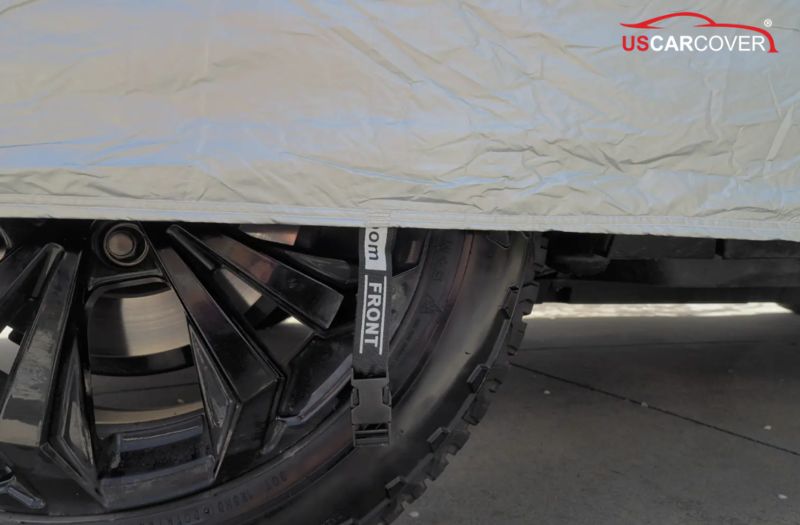
A scratch resistant car cover starts at the liner. The liner should feel velvety, not bleed dye when damp, and not stiffen with age. Next is recessed stitching so there is no proud ridge rubbing a panel edge, and soft hems so the cover’s edge does not become a hard line. On the outer face, UV resistance, water resistance via beading, and breathability must come together. When these small details are done right, a Ford car tarp protects not only paint but also glass, seals, textured plastics, and grilles that tend to fade in sun.
Choosing by context: Sun Belt, coastal, Snow Belt, urban and apartment garages
Sun Belt heat: prioritize a UV resistant car cover, breathable, with a Ford half cover for short noon stops and a Ford full cover for long or overnight parking.
Coastal zones: make breathability the top priority to avoid trapped moisture and mineral rings. A full cover with underbody anchors helps wrap the sides, not just the roof.
Snow Belt: rinse road salt when possible, let the vehicle dry, then install a Ford full cover to avoid long dampness at metal seams. Use a half cover for short daytime stops.
Urban, frequent short stops: a half cover is compact and quick for glass and roof. When you know you will park long, switch to a full cover.
Apartment garages with fine dust: a Ford indoor car cover with ultra soft liner, light weight, and precise fit keeps dust off and reduces incidental rubs from foot traffic.
Strategy pairing: full cover and half cover are not mutually exclusive
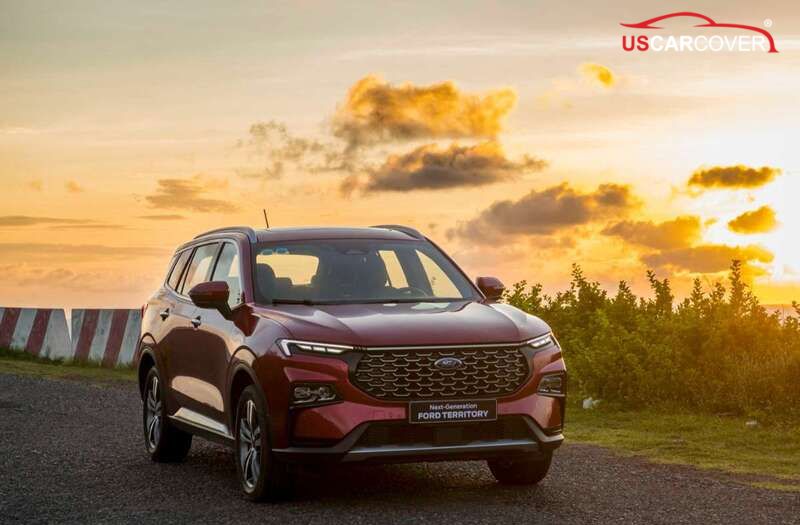
Many owners succeed with a two-pronged plan. During workdays, parking two to four hours, use a Ford half cover to cool the cabin and block vertical fallout. At night or on weekends when parking long, switch to a Ford full cover for whole-body protection and to limit condensation. This switch uses each type’s strengths and turns protection from a nice-to-have into a practical everyday habit.
Related Articles: How to Protect Datsun from Harsh Sun and UV: keep paint and interior looking new
Where to buy a reputable Ford car cover

If you are looking for a Ford car cover that you can trust for daily use and long-term storage, US Car Cover at uscarcover.com is a strong place to start. The catalog spans most Ford lines, from classic nameplates to modern models, with product pages organized by year and variant so you can choose a custom fit cover rather than a generic size.
On purchasing policies, US Car Cover lists Free Shipping on all orders, a 30-day money-back guarantee for peace of mind, along with safe shopping commitments and online support. These are important if you want to build a daily covering habit without worrying about online ordering risks.
The company also states it has direct manufacturing and a warehouse in California, supporting inventory and faster shipping. Contact information, an office address in Buena Park, California, and a customer support phone number are publicly listed for easy pre-sale advice and after-sale help.
For product options, you can look at outdoor covers with UV resistance, water resistance, breathability, with underbody straps and buckles for windy conditions, or indoor covers with soft liners for garage storage, including stretch satin styles that keep a showroom look. All aim at a precise fit, easy handling, and safe protection for Ford paint and glass across U.S. climates.
Compact for daily use, durable for long-term protection
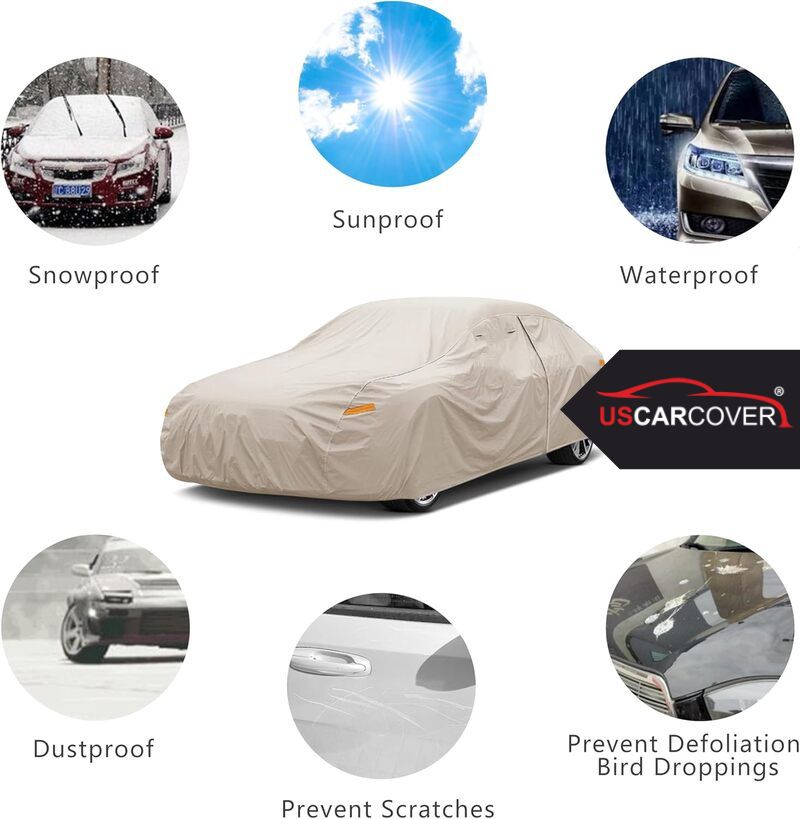
A proper Ford car cover must do four things at once. It must be compact so you actually use it every day, durable enough to take on the variety of U.S. weather, manage rain with the correct mechanism so moisture does not get trapped or leave rings, block strong UV to preserve color and plastics, and cool the cabin so the drive after work feels better. When you combine technical foundations such as a breathable car cover, a scratch resistant car cover with an ultra soft liner, a custom fit Ford cover with aerodynamic stability, and the clean, dry, gentle, stable routine, your Ford stays tidy outside, cooler and fresher inside, and your long-term maintenance costs drop. More importantly, covering is no longer a chore, it becomes a compact, natural motion every day. At that point, compact and durable, rain resistant, strong UV protection, effective cabin cooling is not a slogan, it is the experience you feel every time you pull the cover down and smile at a Ford that still looks like day one
